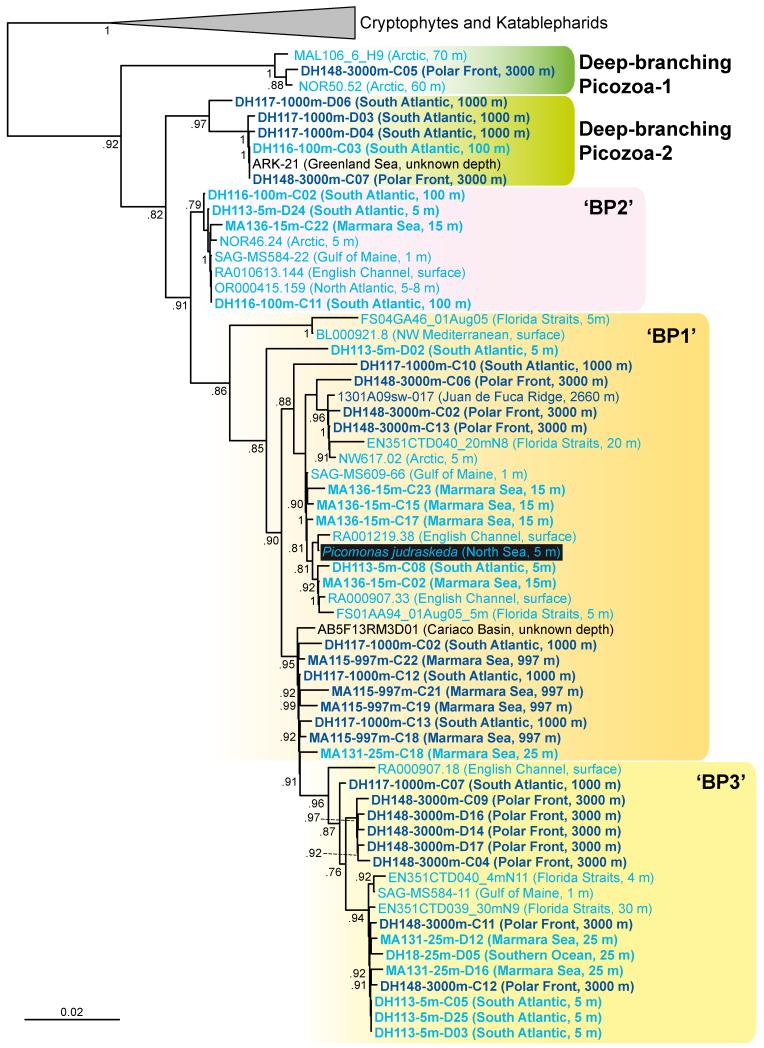Figure 1.
Phylogenetic analysis of ‘pycobiliphyte’ 18S rDNA sequences. Environmental sequences retrieved from the epipelagic region are shown in light blue; deep-sea sequences are highlighted in dark blue. Sequences from our study are in bold (accession numbers KJ173835-KJ173876). 18S rDNA was amplified using the ‘picobiliphyte’-specific primer picolF (5′-CGTTTATTTGATGATCTCTTG) and general eukaryotic reverse primers from a collection of marine plankton DNA from the South Atlantic/Southern Ocean and the Marmara Sea used in previous studies following the same technical procedures [33,34], The name of the only isolated species, Picomonas jadrciskeda, is indicated by a black background. Groups BP1, BP2 and BP3 are named according to Cuvelier et al. [20], The tree was reconstructed by Bayesian analysis using 1,057 positions. The scale bar indicates the estimated number of nucleotide substitutions per site.

